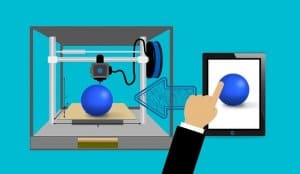In recent years, schools have implemented 3D printing curricula into a large number of subjects. In 2013, U.S. President Obama noted that students should start preparing for jobs that employ these tools. In fact, the 3D printer market is estimated to reach a 2024 high of $35 billion. A large chunk of this outlay will go to industrial 3D printing, otherwise termed additive manufacturing. Worldwide, additive manufacturing will drive production in many industries, including aerospace and specialized automotive, with their vast need for intricate engines and parts. The advantages of moving beyond old-school production are significant.

Simplify Part Structures
When creating large parts or systems, assembly involves attaching cast or molded sections through laborious, time-consuming methods, such as spot welding or rivet bonding. Additive manufacturing streamlines the process by reducing these steps, wherein a whole part can be fabricated in one printing. This method also eliminates fastener stress points in the pieces, a not insignificant benefit.
Avoid Retrofitting Production
Changes occur throughout the manufacturing lives of many products, whether supercar components or rocket engines, to meet market demands. Each change requires expensive and time-consuming retooling. Additive manufacturing eliminates this need to re-equip or alter machinery to create even small variations in intricate parts, as the printers can make minute alterations in response to data instructions. Additionally, 3D printers provide avenues for customization of similar parts to meet the needs of different customers.
Avoid Obsolescence
In a similar vein, as governing regulations change or pieces in machinery wear, the parts become outdated or failure-prone. A small number of replacement components can be printed easily, preventing the need to produce large quantities to be cost-effective.
Fast Processing
One further step toward increasing efficiency and reducing costs is to run productions at the fastest possible speeds, which can be done in printing. However, whatever the pace, 3D printing processes do not build pieces to the highest design and tolerance expectations. The final precise piece comes from additive manufacturing post processing, where chemical milling and surface treatments bring the alloy parts up to standards. Because large numbers of relatively rough printed parts will be put into play rather than thrown out, this two-step process reduces waste.
Large manufactures rely on mass production to produce huge quantities of parts and assembled products. This means of supplying the world has historically been a part of industrial revolutions, as exemplified by the production of the old Model T. Additive manufacturing may drive a new industrial revolution that focuses on specialty fabrication of parts for high-technology industries.
